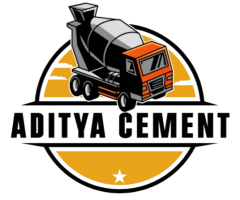- Address : Plot No- E-18 RIICO Industrial Area, Sotanala, Kotputli, Rajasthan
- Email: adityabhr@yahoo.com, info@adityacement.com
- Contact No. : +91-7413074160
we’re here to help!
+91-7413074160
Find Answers Fast!
Cement is a fine, powdery substance that acts as a binder. When mixed with water, it forms a paste that hardens and binds other materials like sand and aggregates to create concrete, mortar, or plaster. It’s a fundamental ingredient in modern construction.
This is a common misconception!
We offer a range of cement types designed for various applications:
Choosing the right cement depends on your project’s specific requirements, including:
Our technical support team can provide expert guidance based on your project’s needs. Please contact us for personalized recommendations.
Cement is typically made by grinding raw materials like limestone, clay, shale, and iron ore. This mixture is then heated in a kiln to very high temperatures (around 1,450°C), forming a granular substance called “clinker.” The clinker is then finely ground with a small amount of gypsum and other additives to produce the final cement powder.
Our cement products strictly adhere to relevant national and international quality standards, such as IS (Indian Standards), BS (British Standards), and ASTM (American Society for Testing and Materials), ensuring consistent quality and performance.
Proper storage is crucial to prevent cement from deteriorating due to moisture.
Generally, cement has a shelf life of about 3 months from the date of manufacture when stored properly in dry conditions. Beyond this period, it may start to lose some of its strength and performance properties due to hydration caused by atmospheric moisture. The manufacturing date is usually printed on the cement bag.
While cement bags don’t typically have a strict “expiry date” like food products, they do have a manufacturing date. It’s strongly recommended to use cement within 3 months of its manufacturing date for optimal performance. After this period, its strength potential may decrease, and it might form lumps.
Extreme temperatures and humidity can significantly impact concrete performance:
Our technical team can provide specific advice for working with cement in various climatic conditions.
Yes, we provide comprehensive technical support for large construction projects, including on-site assistance, custom product formulation, and performance testing. Our team of experts works closely with contractors and engineers to ensure optimal product application and performance.
Our cement products are available through a wide network of authorized dealers and retailers. For large projects or bulk orders, please contact our sales team directly for personalized service and competitive pricing.
We are committed to sustainable manufacturing practices. Our initiatives include:
It is generally not recommended to mix different types or grades of cement without specific technical guidance. This can lead to unpredictable performance and compromise the structural integrity of your construction. Always consult with an expert or follow recommended mix designs.
Signs of compromised cement quality include:
Always inspect cement before use and avoid using any bags that show signs of moisture damage or significant lumping.

Copyright © 2025 AdityaCement, All rights reserved.
Designed & Powered by Weblux IT Services